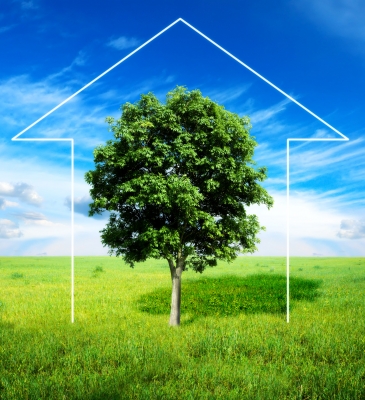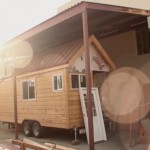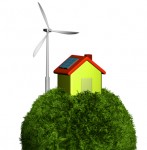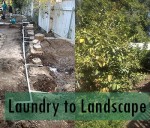
Trends in housing are turning more and more to sustainable living. Many home buyers are looking for ways to incorporate little changes into their homes that not only saves them money, but also helps them to do their part in reducing their own carbon footprint. Here are several things that are trending in home designs that are really starting to catch on.
No Yards
While this may not be a new trend, it is one that seems to be catching on more and more these days. Certain parts of the country have already made it trendy to not have a lawn because the water supply is so limited. This is very common in desert states such as Arizona, New Mexico, Nevada, and part of Utah and California. This doesn’t mean that these home owners do nothing with their yards, it is actually the opposite. By using rocks and desert-friendly plants, there are a lot of ways to make yards look appealing and well cared for without being high maintenance and water-laden.
Harvesting Rain
Depending on some city ordinances, this option is not available in all areas. When building a house, adding a large cistern under the house is a great way to recycle water. The process is fairly simple in concept with gutters catching all the run-off and providing a way to get it down into the storage. This water can then be used to water gardens, lawns, or for irrigation. These types of uses don’t require water filtering because the water will not be for drinking.
Concrete Wall
Strategically placing a concrete wall in a home can work as a natural air conditioner. There are some ways that it is more adequately incorporated into the design of the home, such as in the middle of the home with a winding stair case around it. Having it in a room with high ceilings is very helpful to because it is well ventilated. This is important because the air flow of the room needs to be as adequate as possible. This will not only help to reduce electric bills, but in some cases, it actually works better than some central air.
Sustainable Building Materials
The principal materials used to construct a home are typically very similar in each home, but newer types of materials help with the sustainability of a home. For wall board finishes, use formaldehyde-free birch plywood and twenty-five percent recycled content gypsum. This is a great way to recycle materials. Of course, it would not be a green house if there weren’t any mention of windows and solar panels. Using energy star approved windows do a better job of keeping temperatures regulated inside the home. Wood windows with an average U –value of 1.4 are highly recommended. Solar roof panels also provide cheaper energy than electricity.
Paint and adhesives used on the walls should also be low-VOC in order to be considered sustainable products. There are also flooring options that are more sustainable than others. For instance, using bamboo flooring is highly recommended because of the rate at which it grows. While most trees take decades to grows, bamboo grows in a matter of months, making the effect on the planet less detrimental.
Heating Systems
There are efficient ways to heat a home that do not require the use of natural gases or electricity. This is done with on-demand hot water that circulates through pipes under the floor that will release heat through the rooms it goes through. This system will also heat the house faster and better than other methods. Heating the water can be done with a gas-fired heater or solar-heated tubes as well. It is also possible to have it exclusively heated with the solar method during the summer time or in warmer climates.
AUTHOR: Paul Foresman – a director of business development for online home plans specialist Design Basics. From craftsman to luxury house plans and everything in between, Design Basics has a plan to fit your dreams!
 Tiny Houses: Can They Revive the Disenchanted American Dream?
Tiny Houses: Can They Revive the Disenchanted American Dream? What’s a Green Home and Why Do We Care?
What’s a Green Home and Why Do We Care? Laundry to Landscape Greywater System Explained in Five Steps
Laundry to Landscape Greywater System Explained in Five Steps